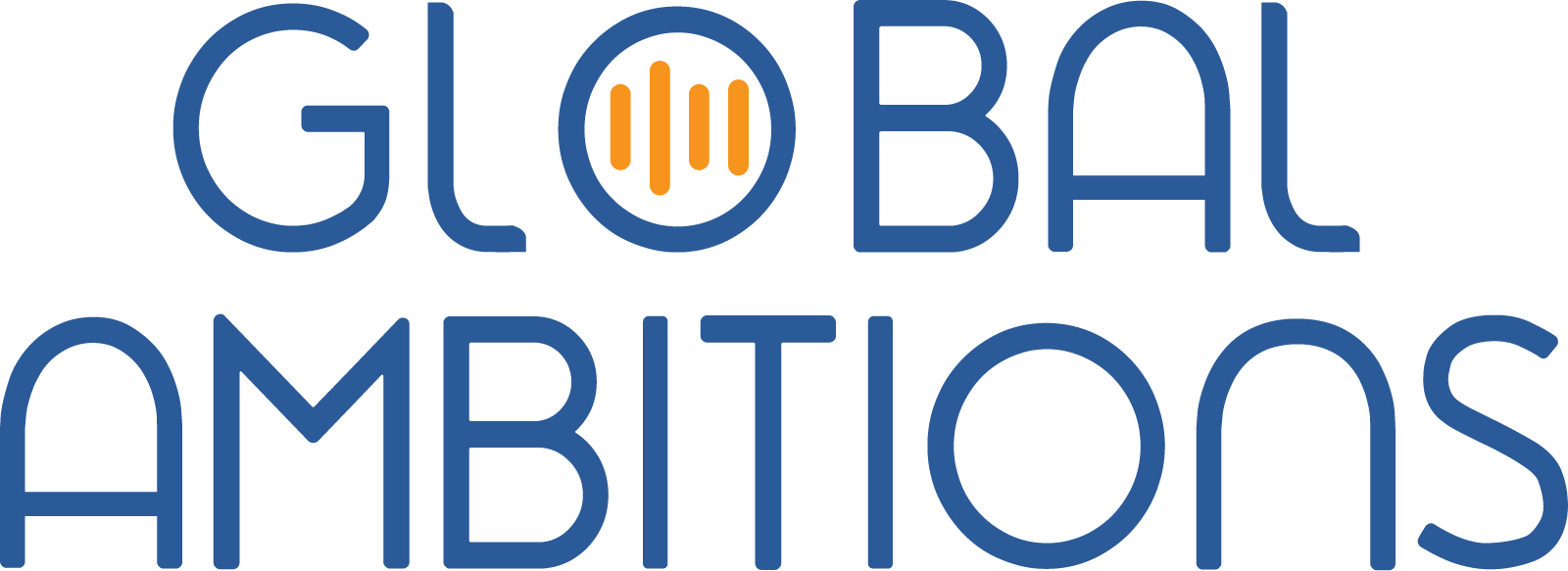With Nataly Kelly, Chief Growth Officer at Rebrandly
Below is an automated transcript of this episode
Antoine Rey: 00:07
I’m Antoine Rey and I will be your host today for this Global Ambitions podcast episode. And today my guest is Nataly Kelly. I think a lot of you will know Nataly, a returning guest on Global Ambitions, and Nataly is a veteran in the tech industry and as an executive, and she’s worked lately with HubSpot and other companies that you probably are familiar with, such as Common Sense Advisory. And today we’ll be talking about Nataly’s upcoming book, which is about taking your company global and the new rules of international expansion. Nataly, welcome to the program.
Nataly Kelly: 00:55
Thank you, Antoine. It’s a pleasure to be back. I love this. It’s one of my favorite podcasts.
Antoine Rey: 01:00
Good, so I’ll jump straight into it and we can talk about life after HubSpot I guess as well at some stage. But we were interested today in your upcoming book, which I believe is coming out in September, with information on how to take your company global and, given your experience with various companies in our industry, I think this is an exciting release there. Do you want to talk to us maybe a little bit about some of the models that you have in there, and I know one of them we’ll discuss was what you call the MARACA model, which I really like.
Nataly Kelly: 01:32
Thank you. Yeah, I’m happy to share more about that, and I just wanted to say, for anyone who’s working in the language space, the translation industry, my hope is that this book will be a great book for your customers to read. I do believe everyone working in this space can benefit from learning about the broader context of taking a company global, beyond what folks usually see in localization, and so that’s one of my goals in this book is to really shed a light on all the internal work that has to happen, as well as the strategy. So you asked about the MARACA model. I wrote a piece for Harvard Business Review a few years ago where I shared this model kind of at a high level, and what it is is basically just a framework to help you select which markets to go into, and a lot of companies basically look at the size of the market and that’s kind of how they determine where they want to go. That’s kind of one extreme, and then I’ll also see in companies where it’s like very opportunistic. So oh, we have a friend who’s doing this in this market and says it’s a good market for us. Or oh, you know, this Japanese company is offering to localize our product for free and resell it in the market or things like that. So there’s kind of this distance between one side of the spectrum and the other, which is, “oh, let’s go for the biggest market and oh, let’s just be super opportunistic.
So what I wanted to do with this model was give people a framework that they can use that looks at three basic elements, and they are MA, RA and CA. So MA basically means market size. I do believe market size is important, so it stands for market availability, how much market is actually available. So it’s not just looking at GDP or any one factor. It’s trying to compute a little bit of the serviceable, addressable market wherever possible. So it’s market size, which is MA, market availability. And the next one is RA, which is real-time analytics. So, instead of being super opportunistic, where you have opportunities to expand into another country, what I have tried to get founders and executives at smaller companies that are trying to figure out their expansion strategy to do is look at what their metrics actually say. And so what are those real-time analytics, or RA metrics that are really important? It might be traffic hitting your website, what countries are coming and hitting your website, but it might be also what’s your close rate by country. What’s your average contract value? What’s your average selling price? What’s your conversion rate from trial to close, trial to payment? What’s your payment success rate? There’s lots of those metrics. So, with real-time analytics, what I try to get companies to focus on is just choosing a few core metrics by country to really look at okay, what’s our success traction? What does the traction look like in this country now? What do we have right now going on? So there’s like that big picture MA market availability metric, then there’s real-time analytics and then there is the CA.
So CA is customer addressability. This is the most complex one because this is basically a measure of how difficult or how easy will it be for us to gain real traction and real momentum and be a leader in a market. So not just can we get past the early adopters, but can we actually be the number one company in this space in this country? And to figure that out I recommend looking at a bunch of different things. So it could be ease of doing business, it could be language proficiency. One of them is, of course, depth of localization. A big one is also do we offer the right payments and currencies? Because a lot of times you can localize all you want, you can market the heck out of everything and you spend a lot of money, but then, when it comes to the time of payment, the transaction will fail Because that credit card isn’t accepted or it’s in a foreign currency and they can’t. It’s going to bounce, it’s not going to work. So sometimes companies invest way too much in all these other things and forget to look at some of those metrics that really determine how much traction can we have in the long term. So with those three metrics MA, RA, and CA I believe companies can have a much better approach to going global. And once you set it up, it’s pretty easy to just update it every year or every quarter with your real-time analytics data. The market size doesn’t change very often. Customer addressability is where you have the ability to really make changes and move the needle to affect those real-time analytics metrics. So those are the three. That’s a lot. I’ll pause and let you ask any questions.
Antoine Rey: 06:27
Yeah, so I presume the product market feed that we see in a lot of the go-to-market strategies there fits into the CA?
Nataly Kelly: 06:34
Exactly, you nailed it. Yeah, that would fit in CA. And sometimes it’s looking at more factors than just product market fit. Sometimes it’s, you know, packaging, like do we have the right packaging and pricing for that market, which is related to product market fit. But sometimes it’s also distribution, you know, do we have salespeople in that country? Do we have partners or resellers in that market? So looking at the different angles that are important for the business, which of course, are going to change from company to company. But in the book what I’ve done is laid out a lot more specifics and examples so that people can kind of take this model and use it if they wish, because it’s very flexible, and as long as they’re thinking about size, traction, metrics, and product-market fit, and I call it country market fit. You know it’s basically like a local country market fit. You know you have to make sure you’re not just you could have product market fit in one country but not in the next. So that’s what I’m talking about in the book in more detail.
Antoine Rey: 07:33
And it sounds to me that it’s almost like a go-to-market maturity model, almost like, instead of being reactive like you mentioned at the beginning, where someone’s reacting to like a reseller or a friend in a given country, you’re giving a model for them to plan this approach and become quite mature in their approach to penetrating in your market. I guess.
Nataly Kelly: 07:59
Absolutely. You know there’s going to be countries where the cost score is already high because, like, if you’re in the US and all you really need to do is go into Canada, maybe to improve the cost score, you add the Canadian dollar, ensure compliance with Canadian laws, you hire some people in Canada and therefore you boost your CA score for your company and that’s going to make it sure that you have better go-to-market fit in that country. It is kind of like a maturity model in that if you are less mature in your ability to address that country, that market, your score is going to be low. And once you adapt and you make changes, then you can get up to a 10 out of 10 if you are doing all the right things for that market.
Antoine Rey: 08:47
That’s one of the important concepts in the upcoming book. Another one that you mentioned to me is the globally equitable organization concept. So can you explain that a little bit, because that’s quite opaque for me still at the moment?
Nataly Kelly: 09:01
Yes, sure. So one of the things that I’m talking about in the book is it’s not enough to be a global company anymore. You might have employees in different countries, you might have customers in different places, but that’s not really enough. What you should strive for in the kind of ambitious goal I’m giving people in the book is you want to strive to be a globally equitable organization. So what does that mean? It means, basically, people might not have identical experiences in all parts of the world. Your employees might not have identical experiences in all parts of the world either, but they can be equitable experiences. So by that I mean everyone has the same level of satisfaction, no matter where they are from. So it could be customer satisfaction, it could be employee satisfaction, but ideally, they should be comparable across markets, and so that’s a different goal than what a lot of companies think about when they’re thinking about going global. They’re thinking, “Oh, let’s increase revenue in this country, or let’s increase the percentage of revenue from international. What I’m talking about in the book is a loftier goal and, I think, a more ambitious goal, which is let’s actually deliver a great customer experience in every market that we’re in, and it’s going to look slightly different, no matter where we are in the world, but let’s make that our goal because the revenue will follow. If we truly delight our customers, we make them happy, and we truly make our employees happy, taking into account that things are different in different locations. They might not have the same resources, the same staff, the same access, but we can still delight them, we can still make them happy. And so how do we do that? That’s what I’m talking about with this concept of globally equitable organizations.
Antoine Rey: 10:48
Sounds like a no-brainer, but like why is a company not doing that? Do you think?
Nataly Kelly: 10:54
I think it’s hard to measure and I think most companies try to apply the same metric across all of their GEOs and, by the way, this globally equitable organization is an acronym for GEO. I think the real reason is it’s hard to measure and also metrics can be misleading. So, like in some countries, no matter what you survey people on, you’re going to get a lower score Japan, for example, you’re never going to get perfection. And then in other markets, the level of enthusiasm is high, no matter what you’re talking about: Brazil. So and I’ve seen this in many, many data sets, not only HubSpot, but long before HubSpot in you know, when I worked at Common Sense Advisory, this was something. But I also worked with lots of people from Gartner, Forrester, and many different market research firms over the years and they told me the same thing it doesn’t matter what you’re serving on, sometimes you’re going to get low scores from this country, because that’s just, the concept of perfection is different. They’re never going to give you a 10 out of 10. And in some countries, the level of enthusiasm is just higher and they’re always going to be more enthusiastic even if they’re not that happy. So it’s really hard for companies to figure this out, because you have to measure, ideally using something that enables you to compare. So a consistent set of metrics, a consistent survey. I talk in the book about how to do this and I have a whole chapter devoted to how you can measure customer experience globally. I introduced this at HubSpot and we did a global customer experience measurement initiative that we ran every year and it was great because it enabled us to see by language, by country, even cutting by segment geo broader geo, sub-geo, and what was nice is we could pinpoint areas of the experience that were off in a given location or a given language that can then inform your localization, investments, where do you add headcount, all of those things? It just gives you a much better picture, with the caveat that you’re going to see discrepancies by country, because of cultural reasons too.
Antoine Rey: 13:05
And is there an overlap? I read your article in Born to Be Global today actually: different strategy between language-led and country-led, so is there an overlap between them?
Nataly Kelly: 13:15
It’s a great question. So it’s that article on the blog on Born to Be Global about do you use a country-led strategy or language-led strategy? In that article what I’m talking about mostly is which to choose at which stage of growth, because I find that there’s a more appropriate way of looking at this depending on what stage you’re at. But as far as the book and this concept of a geographically equitable organization, I think you can have a geographically equitable organization whether you have a language orientation or a country orientation. But I would always suggest that people look at the data by country and by language. Sometimes there are outliers, like you may find, your French speakers in Canada are having a great experience while your French speakers in France are not, or vice versa. So sometimes if you mix two different countries, or three or 14 in the case of Spanish, you might have lots of different countries in there. Then you can have mixed signals in the data. But it just depends on the size of the cohort, because sometimes you can’t even do analysis unless you have a large enough number. That’s when language can be more useful to use than country. If you have very small populations by country and you have to blend them together by language. It’s good to look at both when you can.
Antoine Rey: 14:38
Well, listen, this is a great appetizer for your book that’s coming up in September, as we mentioned, and we recently had a Minette Norman who’s coming up with a book as well in August I believe and we’re going to have a webinar with the two of you at some stage to talk about both concepts, which is going to be very interesting somewhere around in September. So everyone stay tuned for that. It’s going to be exciting. Nataly, thank you again for joining us on Global Ambitions once again, and we look forward to getting the book.
Nataly Kelly: 15:06
Thank you. It’s my pleasure, Antoine. Thank you for having me.





